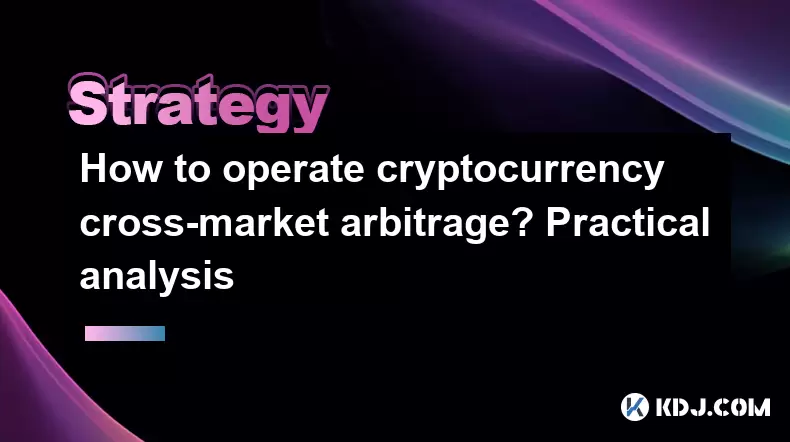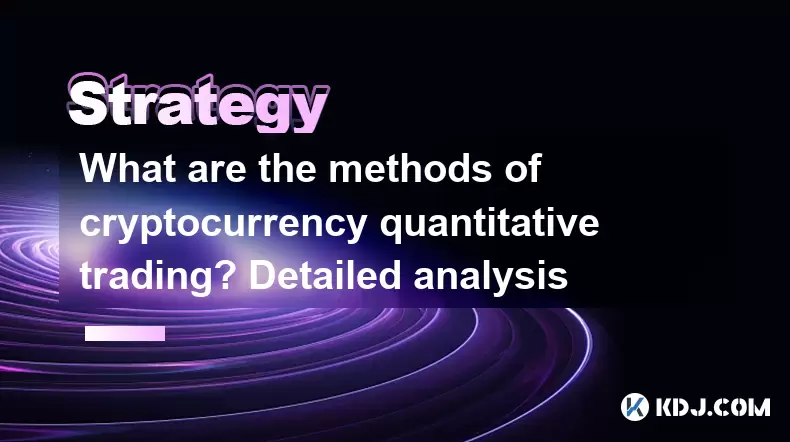-
 Bitcoin
Bitcoin $107,443.3008
-1.17% -
 Ethereum
Ethereum $2,494.2503
-0.63% -
 Tether USDt
Tether USDt $1.0003
0.00% -
 XRP
XRP $2.2496
2.23% -
 BNB
BNB $658.7569
0.63% -
 Solana
Solana $154.9826
1.94% -
 USDC
USDC $1.0000
0.01% -
 TRON
TRON $0.2799
1.07% -
 Dogecoin
Dogecoin $0.1659
-1.78% -
 Cardano
Cardano $0.5745
0.25% -
 Hyperliquid
Hyperliquid $39.7005
0.13% -
 Bitcoin Cash
Bitcoin Cash $519.5989
3.78% -
 Sui
Sui $2.7874
-2.40% -
 Chainlink
Chainlink $13.3762
-1.69% -
 UNUS SED LEO
UNUS SED LEO $9.0784
-0.64% -
 Avalanche
Avalanche $17.9846
-2.81% -
 Stellar
Stellar $0.2390
-0.06% -
 Toncoin
Toncoin $2.9028
0.25% -
 Shiba Inu
Shiba Inu $0.0...01147
-2.17% -
 Litecoin
Litecoin $86.6956
-1.27% -
 Hedera
Hedera $0.1508
-0.50% -
 Monero
Monero $322.6222
3.26% -
 Polkadot
Polkadot $3.4124
-2.99% -
 Dai
Dai $0.9999
0.00% -
 Bitget Token
Bitget Token $4.5434
-1.97% -
 Ethena USDe
Ethena USDe $1.0002
0.00% -
 Uniswap
Uniswap $7.1562
-2.61% -
 Aave
Aave $275.8830
-1.02% -
 Pepe
Pepe $0.0...09790
-4.04% -
 Pi
Pi $0.5018
-5.09%
How to identify false signals in the APT market? Key skills to avoid being misled?
To identify false signals in the APT market, use technical analysis, monitor market sentiment, analyze volume, manage risk, and maintain emotional discipline.
May 05, 2025 at 03:49 am

Understanding the APT Market
The APT (Aptos) market, like any other cryptocurrency market, is rife with signals that traders use to make decisions. These signals can come from various sources, including technical analysis, market sentiment, and news events. However, not all signals are reliable, and distinguishing between true and false signals is crucial for successful trading. Identifying false signals in the APT market requires a combination of knowledge, experience, and specific skills. This article will guide you through the key skills needed to avoid being misled by false signals.
Technical Analysis and False Signals
Technical analysis is a primary tool for traders in the APT market. It involves studying charts and using indicators to predict future price movements. However, technical analysis can sometimes produce false signals, leading traders astray. To identify these false signals, you need to understand the common indicators and how they can be misinterpreted.
Moving Averages: These are used to smooth out price data and identify trends. A false signal can occur when the price briefly crosses a moving average but then quickly reverses. To avoid this, look for confirmation from other indicators or a sustained move beyond the moving average.
Relative Strength Index (RSI): The RSI measures the speed and change of price movements. A common false signal is when the RSI indicates an overbought or oversold condition, but the price does not reverse as expected. To mitigate this, consider the overall trend and use other indicators to confirm the RSI signal.
Bollinger Bands: These bands help identify volatility and potential price breakouts. A false signal can occur when the price touches or crosses a band but then reverts to the mean. To avoid this, look for volume confirmation and consider the context of the overall market.
Market Sentiment and False Signals
Market sentiment plays a significant role in the APT market. It can drive prices up or down based on the collective emotions of traders. However, sentiment can also lead to false signals, especially when driven by hype or fear. To identify these false signals, you need to be aware of the following:
Social Media and Forums: Platforms like Twitter and Reddit can amplify sentiment, leading to rapid price movements. A false signal can occur when a post or tweet goes viral, causing a temporary spike in price that does not sustain. To avoid this, verify the information and look for corroborating evidence from multiple sources.
News and Announcements: News about APT or the broader crypto market can create false signals. For example, a positive announcement might lead to a price surge, but if the news is not as impactful as perceived, the price may quickly fall back. To mitigate this, analyze the long-term implications of the news and consider the market's reaction over time.
Fear, Uncertainty, and Doubt (FUD): FUD can lead to false signals by causing panic selling or buying. To identify these false signals, look for discrepancies between the sentiment and the actual market data. If the price movement does not align with the sentiment, it may be a false signal.
Volume Analysis and False Signals
Volume is a critical factor in confirming or invalidating signals in the APT market. False signals can occur when there is a discrepancy between price movements and trading volume. To identify these false signals, you need to understand how volume interacts with price.
Volume Spikes: A sudden increase in volume can signal a significant price move. However, if the price does not sustain the move, it may be a false signal. To avoid this, look for sustained volume over time and consider the context of the price movement.
Low Volume Moves: Price movements on low volume can be misleading. If the price moves significantly but the volume is low, it may be a false signal. To mitigate this, wait for higher volume confirmation before acting on the signal.
Volume Divergence: When the price moves in one direction but the volume moves in the opposite direction, it can indicate a false signal. To identify this, compare the price and volume trends and look for signs of divergence.
Risk Management and False Signals
Effective risk management is essential for dealing with false signals in the APT market. By managing your risk, you can minimize the impact of false signals on your trading performance. Here are some key skills to develop:
Position Sizing: Determine the size of your positions based on your risk tolerance. Smaller positions can help you weather false signals without significant losses. To implement this, calculate your risk per trade and adjust your position size accordingly.
Stop-Loss Orders: Use stop-loss orders to limit your losses if a trade goes against you due to a false signal. To set a stop-loss, determine your acceptable loss level and place the order at that price.
Diversification: Spread your investments across different assets to reduce the impact of false signals in any single market. To diversify, allocate your capital across various cryptocurrencies and consider different trading strategies.
Psychological Factors and False Signals
Psychological factors can significantly influence your ability to identify false signals in the APT market. Emotions like greed and fear can cloud your judgment and lead to misinterpretation of signals. To overcome these psychological barriers, you need to develop the following skills:
Emotional Discipline: Maintain a disciplined approach to trading and avoid making impulsive decisions based on false signals. To achieve this, set clear trading rules and stick to them, regardless of market conditions.
Patience: False signals can often be identified by waiting for confirmation. To develop patience, practice waiting for clear signals and avoid jumping into trades based on incomplete information.
Self-Awareness: Recognize your emotional state and how it might affect your trading decisions. To improve self-awareness, keep a trading journal and reflect on your decisions and emotions after each trade.
Frequently Asked Questions
Q: How can I improve my ability to identify false signals in the APT market over time?
A: Improving your ability to identify false signals requires continuous learning and practice. Study different market conditions, analyze past trades, and learn from your mistakes. Additionally, staying updated with the latest market trends and participating in trading communities can provide valuable insights.
Q: Are there any tools or software that can help me identify false signals in the APT market?
A: Yes, there are several tools and software available that can assist in identifying false signals. Trading platforms often offer technical analysis tools, and there are third-party software solutions that provide advanced charting and signal analysis. However, it's important to understand that these tools are aids and should be used in conjunction with your own analysis.
Q: Can false signals in the APT market be completely avoided?
A: It is impossible to completely avoid false signals in any market, including the APT market. However, by developing the skills outlined in this article and maintaining a disciplined approach to trading, you can significantly reduce the impact of false signals on your trading performance.
Q: How does the overall market environment affect the occurrence of false signals in the APT market?
A: The overall market environment can significantly influence the occurrence of false signals. In highly volatile markets, false signals may be more common due to rapid price movements and increased emotional trading. Conversely, in more stable market conditions, false signals may be less frequent but still present. Understanding the broader market context can help you better identify and interpret signals.
Disclaimer:info@kdj.com
The information provided is not trading advice. kdj.com does not assume any responsibility for any investments made based on the information provided in this article. Cryptocurrencies are highly volatile and it is highly recommended that you invest with caution after thorough research!
If you believe that the content used on this website infringes your copyright, please contact us immediately (info@kdj.com) and we will delete it promptly.
- Solana, Pepe Coin, Crypto Meme Mania: What's Hot and What's Not?
- 2025-07-01 19:10:12
- Bitcoin Cash Price Pump: Unpacking the Reasons Behind the Surge
- 2025-07-01 18:30:12
- Dogecoin's Wild Ride: Rally Potential Amidst Investor Panic?
- 2025-07-01 19:10:12
- Algorand, Wormhole, and Interoperability: A New Dawn for DeFi
- 2025-07-01 19:15:12
- CATL's Indonesian Battery Blitz: A 6 Billion Dollar Bet on the Future
- 2025-07-01 19:20:14
- Bitcoin, PEP-20, and the Token Standard Revolution: Is Bitcoin Pepe the Next Big Thing?
- 2025-07-01 18:30:12
Related knowledge

What are the skills of Bitcoin option hedging? Practical case sharing
Jun 24,2025 at 04:01pm
Understanding Bitcoin Option HedgingBitcoin option hedging is a risk management strategy used by traders and investors to protect their positions in the volatile cryptocurrency market. By using options, individuals can limit potential losses while retaining the opportunity for profit. In essence, it allows one to insulate against adverse price movements...

How to use the price difference between Bitcoin spot and futures? Arbitrage strategy
Jun 20,2025 at 02:56pm
Understanding Bitcoin Spot and Futures MarketsTo effectively leverage arbitrage opportunities between Bitcoin spot and futures markets, it's essential to understand the fundamental differences between these two types of markets. The spot market refers to the direct buying and selling of Bitcoin for immediate delivery at the current market price. In cont...

How to increase DeFi lending income? Strategy and risk analysis
Jun 24,2025 at 02:08pm
Understanding DeFi Lending and Its Income PotentialDeFi (Decentralized Finance) lending has emerged as a popular way to earn passive income in the cryptocurrency space. Unlike traditional banking systems, DeFi lending platforms allow users to lend their crypto assets directly to borrowers without intermediaries. The lenders earn interest based on the su...

How to operate cryptocurrency cross-market arbitrage? Practical analysis
Jun 23,2025 at 04:01am
Understanding Cryptocurrency Cross-Market ArbitrageCryptocurrency cross-market arbitrage involves taking advantage of price differences for the same digital asset across different exchanges. The core idea is to buy low on one exchange and sell high on another, capturing the profit from the discrepancy. This strategy relies heavily on real-time market da...

How to make profits from high-frequency cryptocurrency trading? Sharing core skills
Jun 19,2025 at 05:07pm
Understanding High-Frequency Cryptocurrency TradingHigh-frequency trading (HFT) in the cryptocurrency market involves executing a large number of trades at extremely fast speeds, often within milliseconds. This method relies on small price discrepancies across exchanges or within a single exchange’s order book. Traders use complex algorithms and ultra-l...

What are the methods of cryptocurrency quantitative trading? Detailed analysis
Jun 22,2025 at 11:07pm
Understanding the Core of Cryptocurrency Quantitative TradingCryptocurrency quantitative trading refers to the use of mathematical models and algorithms to execute trades in the digital asset market. Unlike traditional discretionary trading, which relies heavily on human judgment, quantitative trading leverages data-driven strategies to identify profita...

What are the skills of Bitcoin option hedging? Practical case sharing
Jun 24,2025 at 04:01pm
Understanding Bitcoin Option HedgingBitcoin option hedging is a risk management strategy used by traders and investors to protect their positions in the volatile cryptocurrency market. By using options, individuals can limit potential losses while retaining the opportunity for profit. In essence, it allows one to insulate against adverse price movements...

How to use the price difference between Bitcoin spot and futures? Arbitrage strategy
Jun 20,2025 at 02:56pm
Understanding Bitcoin Spot and Futures MarketsTo effectively leverage arbitrage opportunities between Bitcoin spot and futures markets, it's essential to understand the fundamental differences between these two types of markets. The spot market refers to the direct buying and selling of Bitcoin for immediate delivery at the current market price. In cont...

How to increase DeFi lending income? Strategy and risk analysis
Jun 24,2025 at 02:08pm
Understanding DeFi Lending and Its Income PotentialDeFi (Decentralized Finance) lending has emerged as a popular way to earn passive income in the cryptocurrency space. Unlike traditional banking systems, DeFi lending platforms allow users to lend their crypto assets directly to borrowers without intermediaries. The lenders earn interest based on the su...

How to operate cryptocurrency cross-market arbitrage? Practical analysis
Jun 23,2025 at 04:01am
Understanding Cryptocurrency Cross-Market ArbitrageCryptocurrency cross-market arbitrage involves taking advantage of price differences for the same digital asset across different exchanges. The core idea is to buy low on one exchange and sell high on another, capturing the profit from the discrepancy. This strategy relies heavily on real-time market da...

How to make profits from high-frequency cryptocurrency trading? Sharing core skills
Jun 19,2025 at 05:07pm
Understanding High-Frequency Cryptocurrency TradingHigh-frequency trading (HFT) in the cryptocurrency market involves executing a large number of trades at extremely fast speeds, often within milliseconds. This method relies on small price discrepancies across exchanges or within a single exchange’s order book. Traders use complex algorithms and ultra-l...

What are the methods of cryptocurrency quantitative trading? Detailed analysis
Jun 22,2025 at 11:07pm
Understanding the Core of Cryptocurrency Quantitative TradingCryptocurrency quantitative trading refers to the use of mathematical models and algorithms to execute trades in the digital asset market. Unlike traditional discretionary trading, which relies heavily on human judgment, quantitative trading leverages data-driven strategies to identify profita...
See all articles

























































































